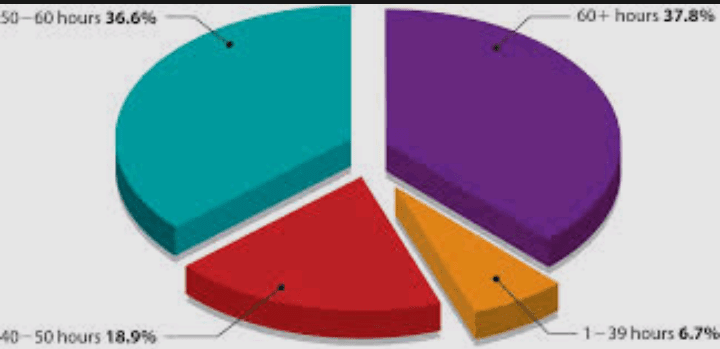Business is the process of purchasing and reselling goods and services with the intention of turning it into a profit. It may also be used to describe the group or business that carries out this activity. There are many different industries in the business world, including manufacturing, retail, finance, and technology, to mention a few.
Businesses can range from modest local startups to big worldwide corporations. The main objective of the majority of businesses is to make money by providing clients with goods or services.
Businesses play essential rule to the economy and to society at large. They encourage innovation and job creation, which can boost the economy. In addition, businesses provide goods and service that people rely on, in their daily lives such as food, clothing, and healthcare.
Businesses can also improve society’s general well being through encouraging social responsibility and sponsoring financial activities. In general, businesses are important because of their capacity to promote economic development and raise people’s standards of living.
Types of Business
There are many different kinds of businesses, from little, privately held companies to big, publicly listed organizations. Typical business categories include:
- A sole proprietorship: Is a company that is run and owned by one person, with no legal distinction made between the owner and the company.
- Partnership: An enterprise owned by two or more people who divide the gains and losses.
- Corporation: A company owned by shareholders that is a distinct legal entity from the shareholders.
- Limited liability company (LLC): A type of business structure that combines the tax advantages of a partnership with the liability protection of a corporation.
- Nonprofit organization: A company that does not distribute profits to its owners or shareholders and is organized for charitable, educational, or other social purposes.
- Cooperative: An enterprise owned and managed by a group of customers, with profits distributed among the members.
- Franchise: A company whose owner (franchisee) is given permission to use the franchisor’s trade name, trademarks, and business systems in exchange for a fee.
Benefits of Business
There are several Advantages to establishing and running a business, which including the following:
- Independence: Being a business owner gives you the power to decide for yourself and to run your own show.
- Control: You have the ability to change the course and future of your company as you see fit.
- Possibility of profit: If your company is successful, you could make money and receive rewards.
- Personal and professional development: Running your own business may be a rewarding and difficult experience that helps you develop both.
- Contribution to the economy: By running a business, you support the economy as a whole and help in the creation of jobs for others.
- Flexibility: Within the limit of your business, you have the freedom to establish your own hours and move at your own speed.
- Ownership pride: Owning your own firm gives you a sense of pride and success.
- Possibility of problem solving: As a business owner, you have the chance to recognize and address issues in your sector or market.
Disadvantages of Business
Are you perhaps asking questions like: what is happening to my business? Well, starting and operating a business can have a lot of disadvantages which are as follows:
- Risk: Launching a business entails assuming a certain amount of risk, and there is always a chance that it won’t be successful.
- Time commitment: Owning and operating a business can take a lot of time and frequently entail working long hours.
- Financial burden: Launching a firm can be costly, and it may take some time before it starts to turn a profit. The business owner may experience financial stress as a result.
- Limited flexibility: You might not have as much freedom to take time off or pursue other possibilities as a business owner.
- Legal and regulatory obligations: Businesses must adhere to a multitude of legal and regulatory regulations, which can be difficult to understand and time consuming to negotiate.
- Competition: A new firm may find it challenging to stand out and get clients due to a high level of competition in the market.
Read Also: Top 9 Importance of Branding to your Business

Businesses can be categorized or classified in a various ways, but some of the more popular ones include by size, sector, and ownership structure.
By Size:
- Small companies: Typically, these are companies with fewer than 500 people.
- Mid-sized companies: These can have anywhere from 500 and thousands of employees.
- Large enterprises are those that employ more than a few thousand people.
By Sector:
- Manufacturing: These companies create products like electronics, apparel, and food.
- Service: These companies offer services like counseling, legal counsel, and haircuts.
- Retail: These companies, which may operate online or in physical stores, sell products directly to customers.
- Wholesale: Rather than selling products to consumers, some companies sell wholesale.
By kind of ownership:
- A sole proprietorship is a company that has just one owner and one employee.
Limitations of Business
There are numerous limitations that firms could experience, which include the following:
- Financial constraints: Companies could lack the funds necessary to support operations, grow, or engage in new prospects.
- Resource restrictions: Companies might not have access to the resources they need to produce goods or services (such as skilled personnel, equipment, or raw materials).
- Market restrictions: A company’s goods or services might only have a small market, or it might compete with other businesses.
- Legal restrictions: A business’s operations or ability to access specific markets may be restricted by laws and regulations.
- Technological restrictions: A company’s inability to obtain the newest technology may limit its capacity to innovate or compete.
- Environmental restrictions: A company could be subject to environmental restrictions like pollution laws or the need to protect natural resources.
- Social restrictions: A company may encounter social or cultural restrictions, such as a poor public image or a lack of community support.
Business can further be based on how many people they have and how much income they make, firms can be divided into small and large businesses. Typically, small firms are those with less than 500 employees, whereas large organizations have more than 500 workers.
The primary objective of a business is to make a profit, which is the difference between income and expenses. Businesses need to make a profit because it enables them to reinvest in the company, pay off debt, distribute dividends to shareholders, and give owners a return on their investment.
Businesses must engage in a variety of activities, such as marketing, sales, and customer support, in order to produce profit. The process of promoting and selling goods or services to prospective clients is known as marketing. The act of convincing clients to buy goods or services is known as sales. The process of assisting and supporting consumers before, during, and after a purchase is known as customer service.
A firm may be impacted by a number of variables, including the economy, competition and technological advancements. The capacity of an organization to make a profit can be impacted by economic factors like unemployment and inflation. The competition between firms is a struggle for customers and market share. A business may also be impacted by technological changes because emerging technologies have the potential to challenge and even replace established business models.
In conclusion, a business is an entity that transacts with customers to exchange goods, services, or both for money, other things, or services. Its primary objective is to make a profit, which it accomplishes through operations including marketing, sales, and customer service. A firm may be impacted by a number of variables, such as the economy, competition and technological advancements.
Read Also: The Products Derived from Bulky Wastes
